Empowering Fashion: The Enduring Allure of Pants Suits for Women
The emergence of the pantsuit as a fashion staple for women is deeply rooted in broader social movements and cultural shifts challenging traditional gender roles. Early adopters like Coco Chanel and Marlene Dietrich were instrumental in legitimizing and popularizing trousers as a stylish and empowering choice for women – well before the pantsuit became widely accepted.
Coco Chanel: Redefining Elegance
Coco Chanel was among the first designers to challenge the restrictive norms of women’s fashion in the early 20th century. In the 1920’s, Chanel began incorporating trousers into women’s wardrobes—not as novelty or anything scandalous, but as a form of practical elegance. Influenced by menswear, Coco introduced wide-legged trousers, sailor pants, and relaxed silhouettes – initially it was for sports and leisure, then eventually for day-wear. While not full pantsuits in the modern sense, her ensembles gave women a new kind of freedom and set the groundwork for androgynous fashion.
Marlene Dietrich: Androgyny as Power
German-American actress Marlene Dietrich pushed boundaries even further in the 1930’s, wearing tailored tuxedos and pantsuits both on and off screen. She was famously photographed in a full men’s suit in 1933, which scandalized some, but thrilling others. Dietrich’s style was bold and subversive—deliberately playing with masculine aesthetics and turning them into expressions of feminine strength and sexual autonomy. In doing so, she turned fashion into a statement of identity and resistance.
Courage in Context
At the time, Chanel and Dietrich embraced trousers and tailored silhouettes, societal expectations were rigid: women were expected to wear skirts or dresses, and deviations from this norm, could result in public criticism or even legal consequences. In some cities, it was literally against the law for women to wear pants in public unless they had a special permit (as was the case in Paris until a symbolic law change in 2013).
These early adopters were not merely making style choices—they were asserting autonomy in a male-dominated world. Their sartorial decisions were political acts that helped pave the way for women in business, politics, and culture to later wear pantsuits as emblems of professionalism and empowerment.
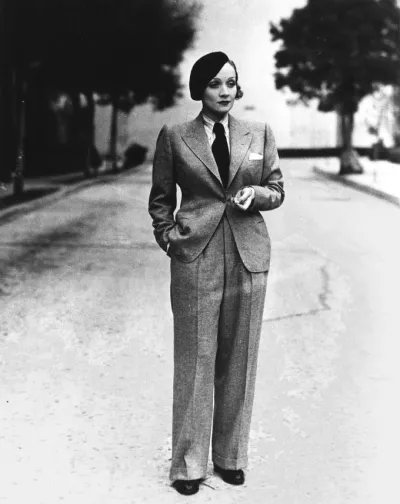
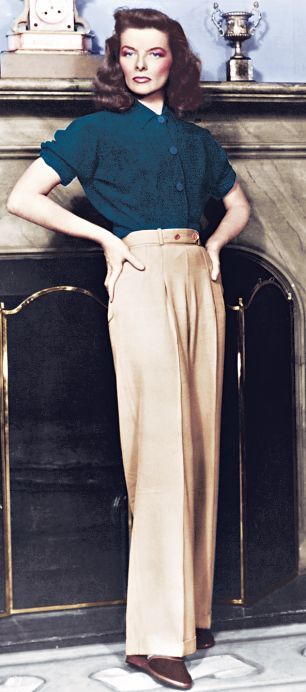
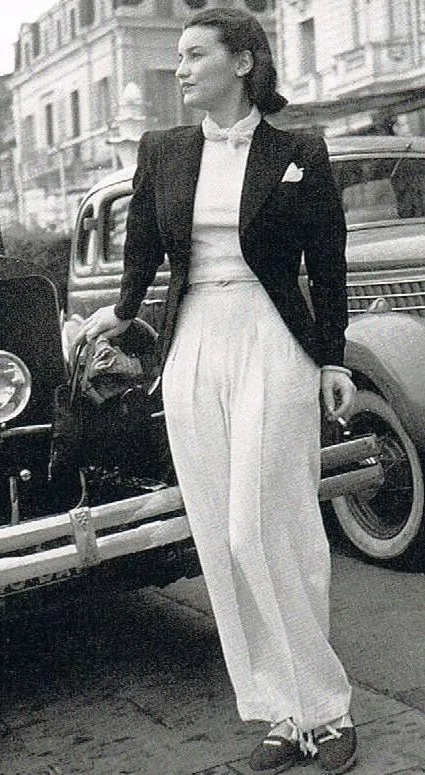
Cultural Shifts: How these movements brought pants suits into the mainstream, reflecting evolving gender norms and women’s empowerment.
The rise of the pantsuit as a staple in women’s fashion is a powerful narrative of cultural change, shaped by key social movements and evolving gender norms. From a symbol of defiance to an emblem of professional equality, the pantsuit’s mainstream acceptance parallels the broader struggle for women’s rights and gender equity. Here’s an analysis of how different cultural movements contributed to this transformation:
Early 20th Century: First-Wave Feminism and Wartime Necessity
- Cultural Shift: The early feminist movement (late 19th to early 20th century) fought for suffrage and basic legal rights. During World War I and II, women entered the workforce in large numbers, taking over traditionally male jobs.
- Impact on Fashion: Practicality became essential. Women wore trousers and coveralls in factories and farms, challenging the skirted norm.
- Reflection: This period subtly shifted public perception, connecting pants with women’s ability to perform “male” roles and suggesting new gender possibilities.
1960’s-70’s: Second-Wave Feminism and the Sexual Revolution
- Cultural Shift: Second-wave feminism emphasized workplace equality, reproductive rights, and dismantling traditional gender roles. The civil rights movement and counterculture also questioned existing social hierarchies.
- Fashion Milestones:
- André Courrèges and Yves Saint Laurent introduced high-fashion women’s trousers and the iconic Le Smoking tuxedo in 1966.
- Golden age celebrities like Katharine Hepburn, Audrey Hepburn and Marlene Dietrich embraced masculine tailoring, while other celebrities such as Diane Keaton and Bianca Jagger continued this trend.
- Reflection: The pantsuit became a symbol of rebellion and sophistication. It challenged the notion that power and professionalism were exclusively male domains.
1980’s: Corporate Power Dressing and Professional Equality
- Cultural Shift: As more women entered the corporate world, they faced pressure to conform to male-dominated environments. The era emphasized “having it all”—career and family.
- Fashion Evolution: The power suit, with shoulder pads and structured tailoring, became a tool for asserting authority and professionalism.
- Reflection: The pantsuit served as both armor and assertion—women could embody leadership without surrendering their femininity.
1990’s–2000’s: Normalization and Political Symbolism
- Cultural Shift: Conversations around gender became more nuanced, and women began holding higher offices in politics and business.
- Notable Figures:
- Hillary Clinton helped normalize the pantsuit in politics, turning it into a symbol of determination and consistency.
- Pop culture, from “Ally McBeal” to “The West Wing,” showcased women in pantsuits navigating male-dominated spaces.
- Reflection: The pantsuit now stood for more than professionalism—it became a political and cultural shorthand for women’s resilience and ambition.
2010’s–Present: Gender Fluidity and Inclusive Empowerment
- Cultural Shift: Modern feminism embraces intersectionality and challenges binary gender norms. The fashion industry has begun to reflect and promote inclusivity and gender-neutral styles.
- Current Trends:
- Designers showcase androgynous and unisex fashion on runways.
- Women (and nonbinary individuals) reclaim suits as a form of self-expression.
- Reflection: Today’s pantsuit represents freedom—the freedom to define oneself beyond traditional gender roles and to occupy any space, from boardrooms to red carpets, with authority and style.
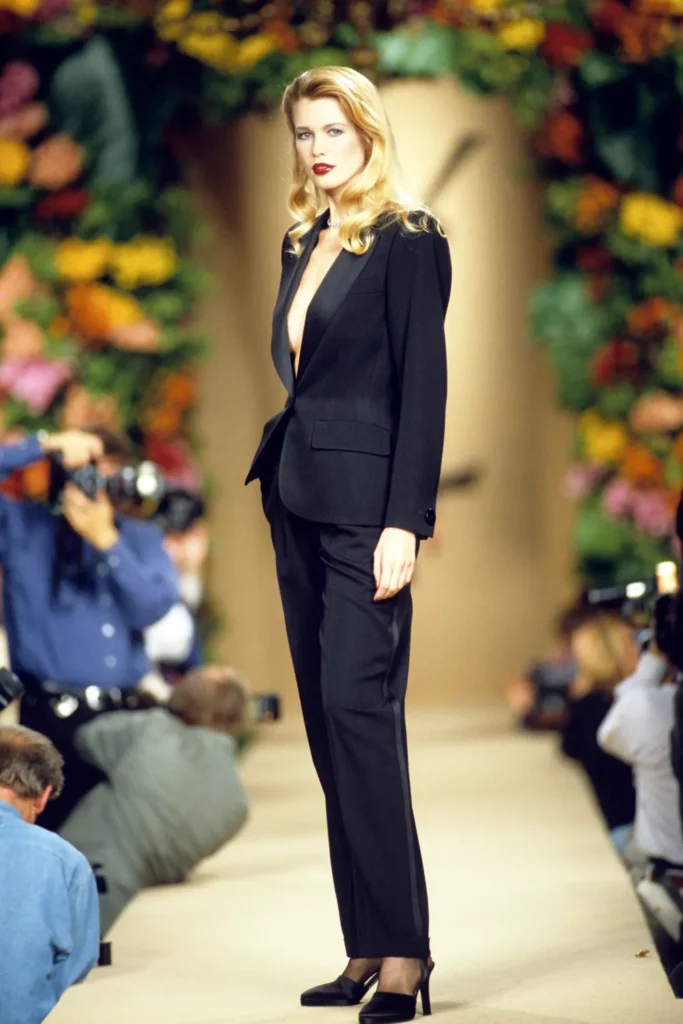
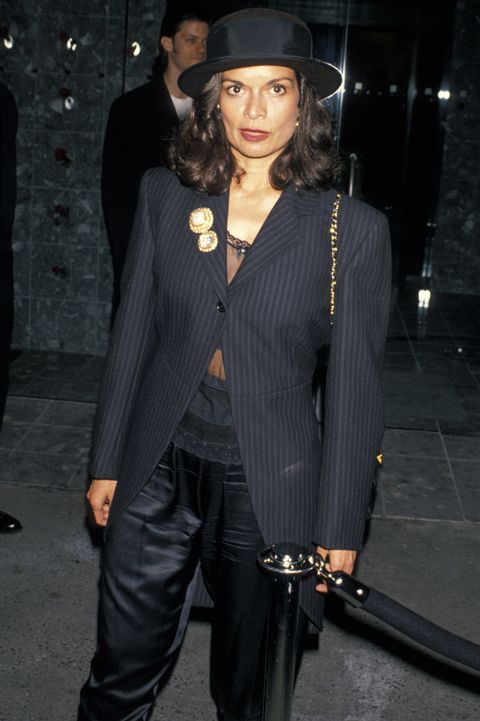
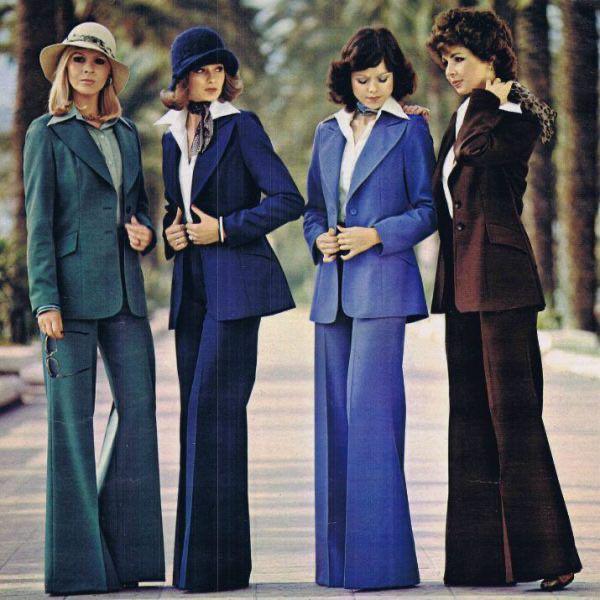
Conclusion
Each wave of cultural change—feminism, civil rights or gender equality—has influenced the pantsuit’s evolution from controversial to conventional. What began as a challenge to norms is now a diverse, dynamic symbol of empowerment, demonstrating how clothing can both reflect and drive cultural transformation.
Key Trends: Pantsuits going from classic styles to contemporary fashion statements.
Pants suits have undergone significant transformations from their early, utilitarian roots to becoming powerful contemporary fashion statements. Here are key trends and shifts that mark this evolution:
Origins and Early Adaptations (1920’s–1960’s)
- Androgyny and Rebellion: Pioneered by fashion icons like Coco Chanel and Marlene Dietrich, early pants suits challenged gender norms by introducing masculine tailoring for women.
- Boxy Silhouettes: Suits during this period were largely boxy and conservative, echoing traditional menswear aesthetics.
Power Dressing and Feminine Authority (1970’s–1980’s)
- Rise of the “Power Suit”: With more women entering the workforce, designers like Giorgio Armani redefined the pants suit with broader shoulders and structured tailoring, symbolizing authority.
- Bold Colors and Fabrics: Power suits embraced bold hues, pinstripes, and luxurious materials, marking confidence and status.
- Shoulder Pads: A defining feature, shoulder pads emphasized strength and dominance, a staple of the 1980’s style.
Minimalism and Sleek Refinement (1990’s–2000’s)
- Streamlined Silhouettes: The excessive proportions of the ’80’s gave way to slimmer, more minimalist cuts.
- Neutral Palettes: Earth tones and monochromatic looks became the norm, influenced by minimalism and the rise of “quiet luxury.”
- Versatility: Pants suits began to be worn outside the office, reflecting more casual and flexible fashion norms.
Contemporary Reinvention (2010’s–Present)
- Gender Fluidity: Designers now offer pants suits that blur gender lines, embracing non-binary fashion.
- Bold Experimentation: Contemporary pants suits feature vibrant colors (e.g., bright pink, neon green), unconventional fabrics (like sequinned or velvet), and modern cuts (cropped blazers, wide-leg pants).
- Street Style and High Fashion Fusion: Influencers and designers alike have reimagined pants suits with sneakers, bralettes, and statement accessories, making them both formal and edgy.
- Sustainability: Eco-conscious materials and ethical tailoring have gained popularity in modern pants suits.
Customization and Personal Expression
Designers revisited pantsuits with bold colors, slim cuts, and playful details.
Tailoring has become more experimental—featuring oversized fits, unexpected fabrics (like velvet, satin, or sequins), and even shorts or crop-top variations. Emphasis on personal expression and inclusivity has made pantsuits a unisex fashion choice. Pantsuits became versatile—worn casually, professionally, and as eveningwear.
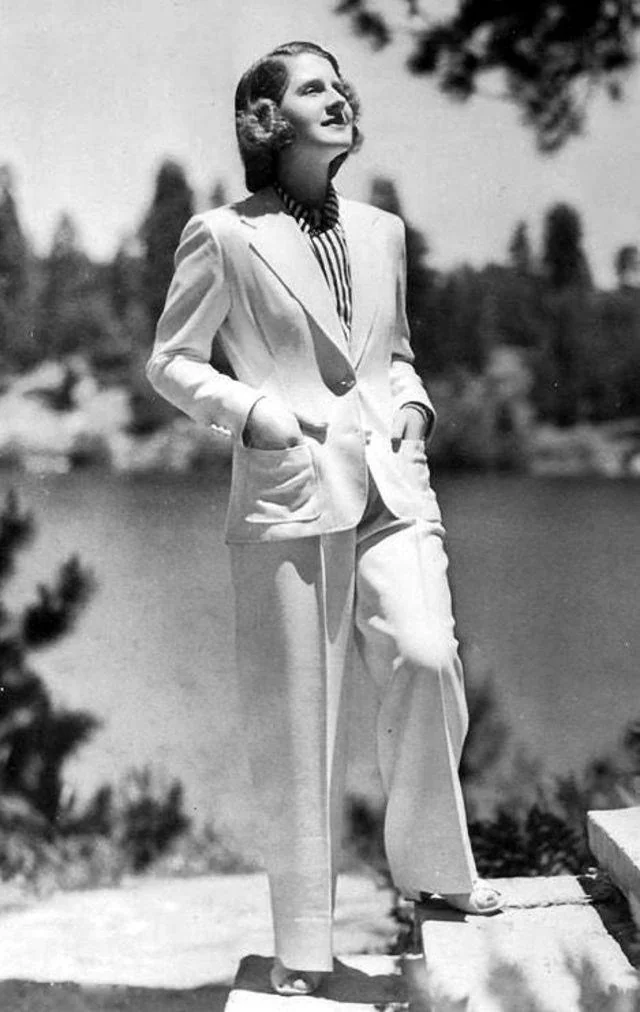
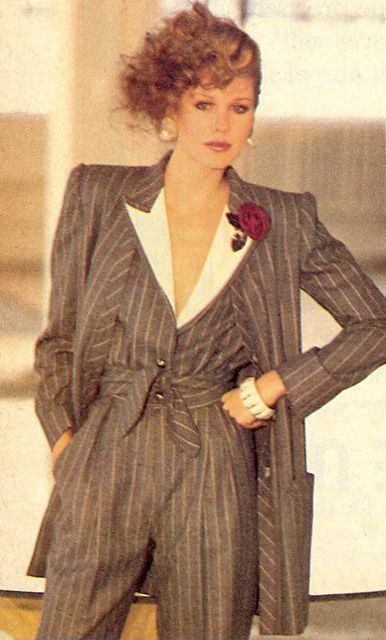
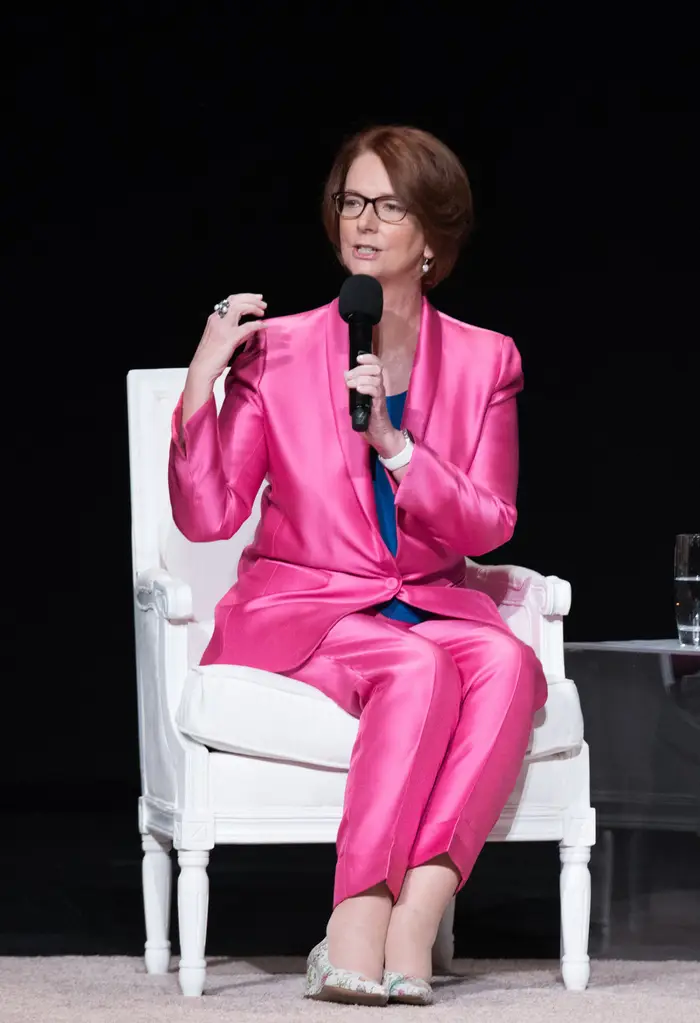
Symbolism and Power: Explore how pants suits have become synonymous with authority, professionalism, and confidence.
Pantsuits, once considered unconventional attire for women, have evolved into powerful symbols of authority, professionalism, and confidence. This transformation reflects broader social shifts, particularly in gender roles, workplace dynamics, and fashion as a tool of empowerment.
Historical Background and Gender Norms
Traditionally, Western professional attire was sharply divided by gender, with men wearing suits and women expected to wear dresses or skirts. The adoption of pantsuits by women in the mid-20th century marked a direct challenge to these norms. Designers like Coco Chanel and Yves Saint Laurent (with his iconic 1966 “Le Smoking” tuxedo suit for women) redefined the possibilities of women’s fashion, framing pantsuits as elegant and assertive rather than masculine imitations. Some variations of the Le Smoking jacket can be found online at Etsy today. Scroll down this page to find a few alternative Le Smoking style suits here at Amazon online.
Symbol of Authority
Pantsuits came to symbolize authority precisely because they transgressed existing gender expectations. Women in positions of power, such as politicians, CEOs, lawyers or Doctors—have increasingly adopted pantsuits as visual declarations of competence and control. The suit’s structured silhouette, often associated with discipline and order, projects a commanding presence. When women wear them, the message is clear: they are equal participants in traditionally male-dominated spaces.
Professionalism Redefined
By the late 20th century, pantsuits had become an accepted part of business attire for women, signaling not just conformity to professional standards but also the evolution of those standards themselves. Today, they represent a balance between traditional corporate expectations and modern ideas about individuality and gender expression. Tailored, stylish, and versatile, pantsuits enable women to navigate professional spaces without sacrificing identity or credibility.
Confidence and Empowerment
Beyond external perception, the pantsuit serves as a psychological tool. Many women report feeling more confident and in control when wearing one. It offers a sense of armor—sharp lines, clean cuts, and often bold colors—that embodies self-assurance. Hillary Clinton’s embrace of the pantsuit as her signature look during her political career, for example, turned it into a personal brand and a visual shorthand for resilience and leadership. Here are some modern style suits for the budget conscience to consider – when shopping for the “office look” at Amazon. Elegant and classic styles start here through Etsy today – find your perfect style.
Cultural and Political Symbolism
Pantsuits have also become politicized garments. During key political moments—such as women wearing white pantsuits to honor the suffragette movement—fashion has been used to make powerful statements. The “Pantsuit Nation,” a social media group that emerged during the 2016 U.S. presidential election, illustrates how clothing can become a rallying symbol for gender equality and political solidarity.
In summary, the pantsuit has transcended its origins as mere clothing to become a cultural and political symbol. It represents a convergence of fashion and feminism, professional respect and personal power—a tailored statement that says, unequivocally, “I belong here.”
Influential Figures: Highlight the role of public figures, from political leaders to celebrities, in popularizing pants suits and setting trends.
Public figures—ranging from political leaders to celebrities—have played a pivotal role in popularizing the pantsuit and elevating it as a symbol of empowerment, professionalism, and style. Their visibility and influence have not only propelled the pantsuit into mainstream fashion but also reshaped its cultural significance.
Political Leaders
Political figures, particularly women in leadership roles, have transformed the pantsuit into a statement of authority and defiance against traditional gender norms.
- Julia Gillard, was the first female Prime minister elected in Australia. She took her position very seriously – appearing strong, powerful and feminine – from campaigning to media appearances she always dressed professionally and favoured the pants suit – depicted in many online images of her.
- Angela Merkel, former Chancellor of Germany, also frequently opted for pantsuits, favoring their practicality and uniformity. Her wardrobe choices projected a sense of reliability, seriousness, and professionalism.
- Kamala Harris, the first female Vice President of the U.S., has used the pantsuit to convey both elegance and authority. Her choices often balance formality with modern style, reinforcing her position as a powerful, trend-conscious leader.
Celebrities
Celebrities have been instrumental in making pantsuits fashionable beyond political and corporate spheres, introducing bold colors, unconventional cuts, and high-fashion twists.
- Rihanna, Zendaya, and Lady Gaga have all worn statement-making pantsuits at red carpet events, pushing the boundaries of traditional tailoring and reinterpreting the outfit as glamorous and edgy.
- Janelle Monáe is known for her signature black-and-white suits, using the look as both a fashion statement and a tribute to her working-class roots.
- Beyoncé, in performances and public appearances, has also donned tailored pantsuits, often using them to convey strength and femininity.
Fashion Designers and Icons
Fashion icons and designers have embraced and promoted the pantsuit as a staple of modern women’s wardrobes for decades – starting in Europe where the trends began.
- Yves Saint Laurent revolutionized women’s fashion in the 1960’s with the introduction of “Le Smoking,” a tuxedo-style suit for women that challenged dress codes and redefined evening wear.
- Coco Chanel laid the groundwork for women wearing pants in the early 20th century, helping to destigmatize trousers and pave the way for the pantsuit.
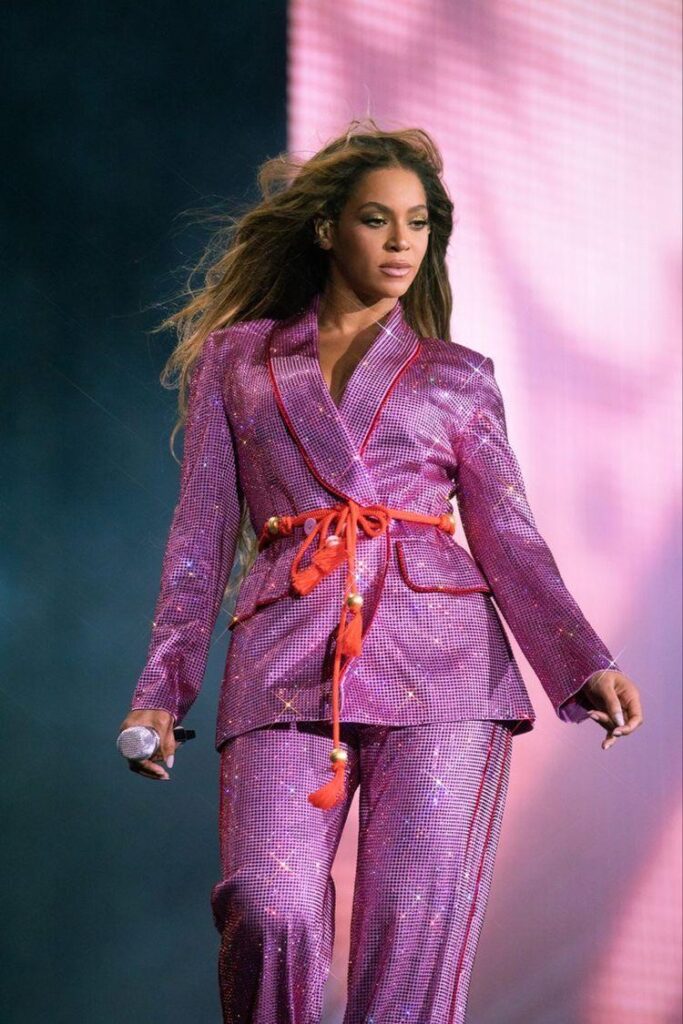
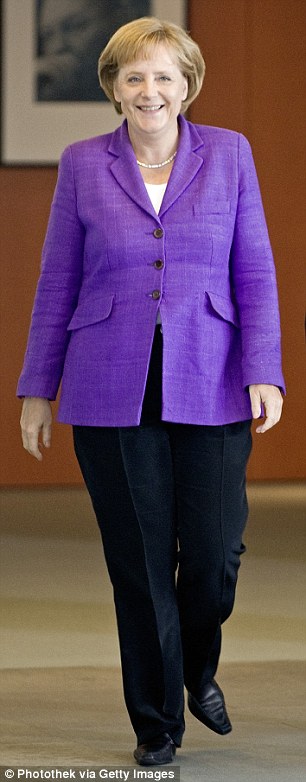
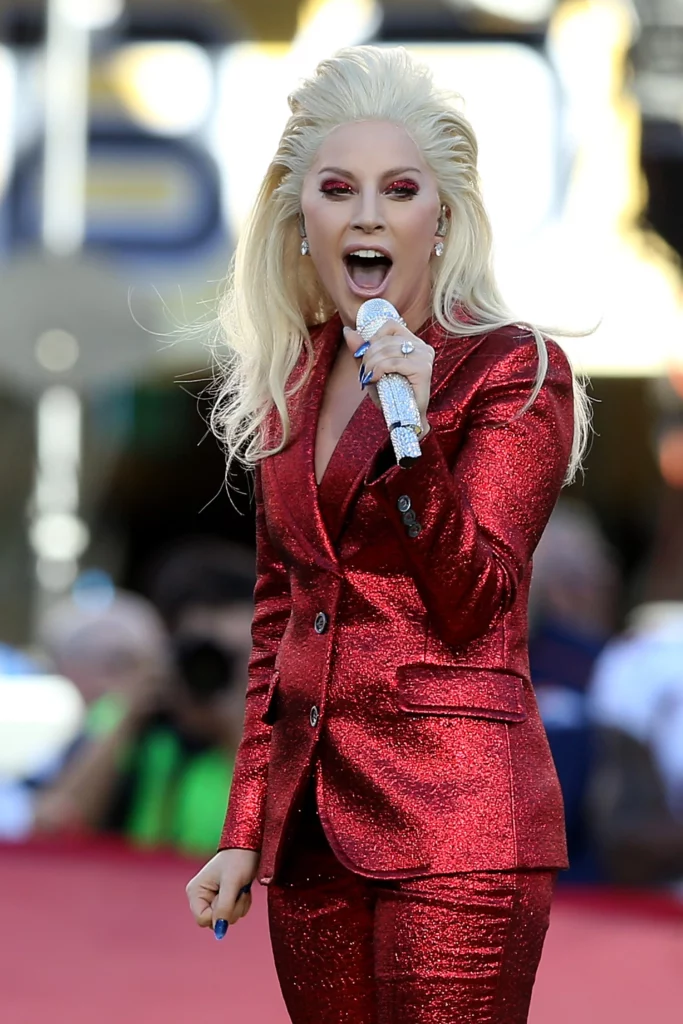
Conclusion
From boardrooms to red carpets, public figures have used the pantsuit to make political statements, challenge gender norms, and set fashion trends. By embracing the garment in diverse and high-profile settings, they have ensured its evolution from a symbol of rebellion to an accepted and celebrated element of mainstream fashion.
Modern Resurgence: Examine the recent resurgence in popularity due to designers’ renewed focus, sustainability efforts, and changing workplace dynamics in women’s suits.
The resurgence of women’s suits in 2025 reflects a confluence of evolving workplace norms, heightened sustainability awareness, and innovative design approaches. This revival is not merely a return to traditional tailoring but a reimagining of the suit as a symbol of empowerment, adaptability, and environmental consciousness.
🧵 Designers Leading the Charge
Contemporary designers are redefining women’s suiting by blending classic silhouettes with modern sensibilities. Designer Stella McCartney’s “Laptop to Lapdance” collection, showcased in a staged office setting during Paris Fashion Week, featured broad-shouldered jackets and low-waisted trousers crafted from sustainable materials, emphasizing fluidity and versatility in women’s wardrobes . Similarly, emerging labels like Copenhagen’s Bonnetje and Amsterdam’s Rohé are repurposing vintage menswear into avant-garde pieces, merging sustainability with innovative design. Source – Financial Times+1Capitol Hill Clothiers+1Indulgexpress+3AP News+3Reuters+3
🌱 Sustainability at the Forefront
Sustainability has become a cornerstone in the resurgence of women’s suits. Brands like ADAY offer machine-washable, wrinkle-free suits made from recycled materials, catering to the modern professional’s need for both style and eco-consciousness . Filippa K emphasizes ethical production, utilizing mulesing-free wool and solar-powered manufacturing processes . Phoebe English stands out for her commitment to circular design, using surplus materials and botanical dyes to create gender-fluid collections that prioritize environmental responsibility throughout a garment’s lifecycle. Source – The Good TradeSustainable JungleFinancial Times
🏢 Adapting to New Workplace Dynamics
The post-pandemic shift in work culture has influenced fashion trends, with designers responding to the evolving needs of professionals. The “corpcore” aesthetic, characterized by tailored pieces with a modern twist, reflects a desire for clothing that bridges the gap between formal office wear and comfortable, expressive attire . Gen Z’s influence is evident in the incorporation of bold colors, relaxed fits, and personalized elements, challenging traditional dress codes and promoting individuality in professional settings .The Wall Street Journal+2Indulgexpress+2Business Insider+2Goosuit+1The Wall Street Journal+1
✨ The Future of Women’s Suits
Looking ahead, the trajectory of women’s suiting points toward greater inclusivity, sustainability, and personalization. The integration of smart textiles, such as self-adjusting fabrics and health-monitoring features, is on the horizon, blending functionality with fashion . As designers continue to challenge norms and embrace innovation, the women’s suit is poised to remain a dynamic and empowering staple in wardrobes worldwide. Source – Capitol Hill Clothiers+1solovedress.com+1Allwork.Space

I certainly hope you all have enjoyed this post on ladies pants suits – and got some great insights into the history of this ensemble – a favourite of mine since the 1970’s.
Please reach out if you have a questions, or simply follow us on our socials below:
https://www.facebook.com/vintageclothesandaccessoriesaustralia
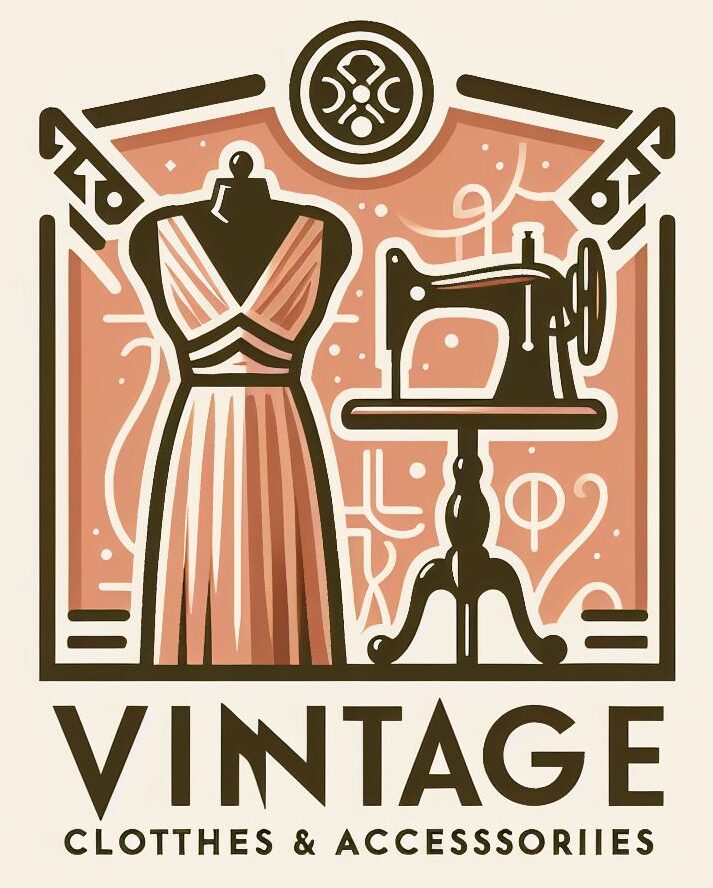

This article offers a comprehensive and insightful look into the evolution of women’s pantsuits, highlighting their journey from a symbol of rebellion to a mainstream fashion staple. The exploration of early pioneers like Coco Chanel and Marlene Dietrich, who challenged societal norms by introducing trousers into women’s wardrobes, adds depth to the narrative. It’s fascinating to learn how these bold fashion choices paved the way for the acceptance of pantsuits in various settings, from the workplace to political arenas. The discussion on how pantsuits have been embraced as symbols of empowerment and professionalism is particularly enlightening. Thank you for shedding light on this transformative aspect of fashion history!
Hi Sophie,
thanks again for your lovely comments.
Regards Helen.
Great dive into how women’s pant‑suits evolved from a bold 1970s statement of empowerment to today’s versatile, chic wardrobe staple—especially insightful is the nod to smart textiles and personalized tailoring shaping the future of women’s suiting
For anyone inspired to embrace structured elegance, a classic and polished three piece suit for men adds timeless sophistication—whether you’re aiming for a standout power look or refined everyday style.